1987-1991 Honda Civic Fourth Generation (EF) 3-door Hatchback Photos Gallery
The body got bigger than the previous generation, and it appeared with a catch phrase of “Grand Civic”. The body of a wide style of the glass area is not only practical but also features a sporty driving feeling brought by a low seating position. A sports emphasis attitude is also remarkable in relation to the mechanism, and the engine is equipped with 1.3 L, 1.5 L, 1.6 L SOHC and 1.6 L DOHC, all of which have excellent responsiveness. In addition, it adopts a double wishbone type suspension that excels in road surface compliance and demonstrates high cornering performance. For missions, you can choose 5 MT / 4 AT for all grades.
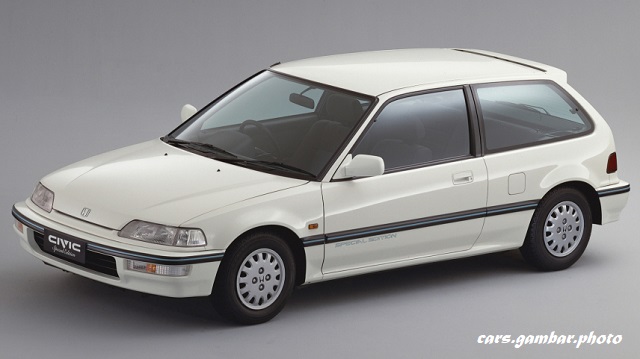 |
| Picture of 1990 Honda Civic 4th Gen (EF) – White (Special Edition) |
The appearance design is told that the motif was flounder. As for the body lineup, three types of 3 doors, 4 doors, 5 doors (shuttle). Although it uses the same car name and model, it adopts a dedicated platform for only 5 doors, whereas for 3/4 doors, unlike the previous generation, it shares only the first half of the floor pan.
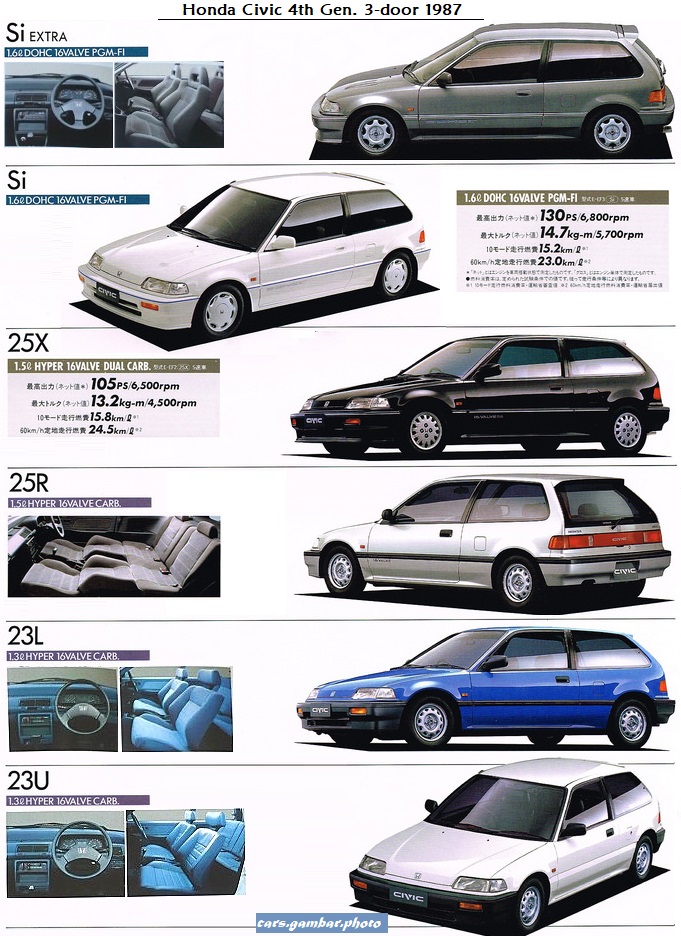 |
| Image of 1987 Honda Civic Fourth Generation 3-door Models (23U, 23L, 25R, 25X, Si, Si Extra) available in 1987. |
Except for “Si” which is also a sports model and “Si – EXTRA” which is its gorgeous specification, the grade name is a combination of numbers and alphabets, the tens place is “3” for 3 doors, “3” for sedan, “5”, 1.3 L for “3”, 1.5 L for “5”, 1.6 L for “6”, then the injection car is “i”, the dual cab (twin-cab) car for “X”, single The cab cars are classified as “L”, “U”, “R”, or “M” depending on the equipment contents, and their display is decaled on the back door or trunk lid, and the side decals and Including it is a discrimination point of each grade.
Also, in addition to the 3-door car, real-time 4WD (standby type four-wheel drive using viscous coupling) is also prepared, and this is a grade name starting with “RT”.
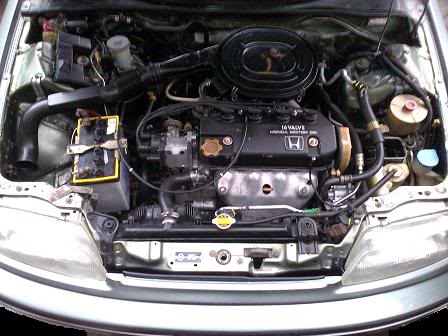 |
| Original 1990 Honda Civic Nouva SB3 Engine Bay Photo. |
From this time the battle at JTC has intensified and as competing with it the power competition has intensified for commercial vehicles. The ZC type engine mounted on the 3-door highest grade “Si” has 130PS / 14.7 kg · m (net value), 4-door sedan “36i” “RTi 4WD”, 5 door shuttle “56i” “RTi 4WD” , A dedicated engine with the same ZC type head as “Si” replaced with 16 valve SOHC was prepared to generate 120 PS / 14.5 kg · m. All other SOHC engines also had 16 valve / center plug arrangement. In addition to the single carburetor specification which generates 91PS / 12.1 kg · m, 105PS / 13.2 kg · m (3 door MT) 100PS / 12.8kg · m (3-door MT), although the main D15B type 1.5L engine has no injection specification (3-door AT / 4, 5 door) CV dual carburetor specification was also set and accelerated lightly over the average rival car of those days. From this time on, in order to match with the characteristics of the transmission, in the MT car and the AT car, the engine output characteristic is changed (the cam profile is changed).
Honda Civic Fourth Generation 3-door Hatchback Exterior Photos
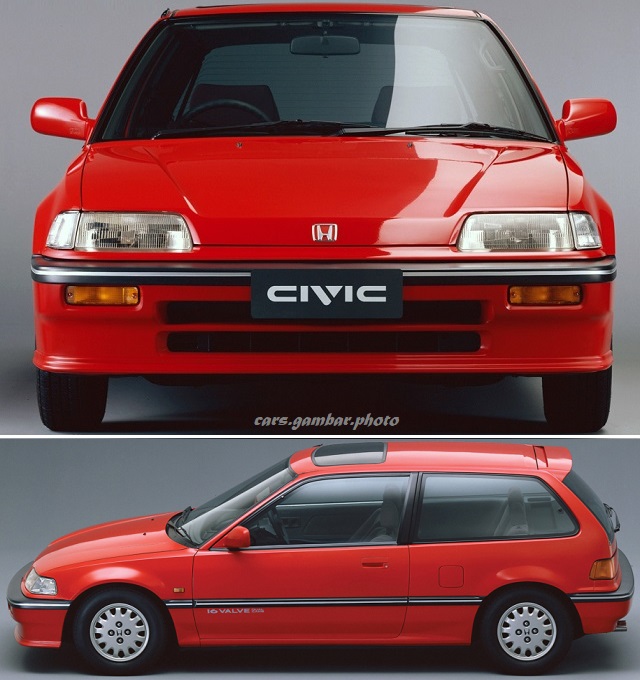 |
| Side view of Honda Civic 4th Gen in red color with sunroof. |
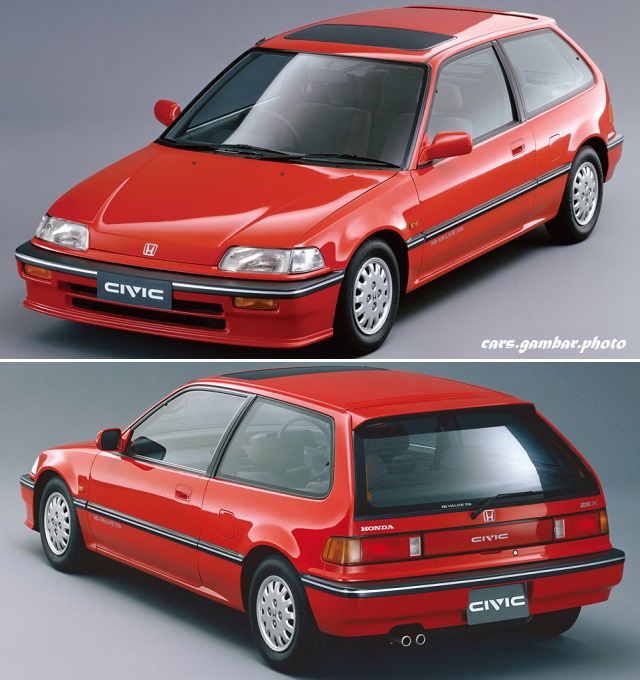 |
| Picture of 4th Gen Honda Civic 25X JDM Spec (1988) – Front Side & Rear view. |
In the transmission, the front wheel drive car became 5 speed MT / electronic control 4 speed AT with lockup, AT evolved at a stroke. For sedan four-wheel drive cars, 5 speed MT with super low is attached for the purpose of enhancing the running performance on rough roads or electronic controlled 2 way 4 speed AT with low hold function with low hold function was prepared. For the shuttle four-wheel drive car, only the 5-speed MT with super-low was adopted at the beginning, afterwards, it became possible to select 4-wheel drive + AT for both sedan / shuttle.
Also, from this generation, a characteristic double wishbone type suspension in which the upper arm is arranged on the tire, similar to the third generation accord, is used for all four grades including “Civic Pro” which is a commercial model of the shuttle .
On the other equipment side also, adoption of a seat which can be flattened with the rear seat by removing the headrest of the front seat, greatly improved interior feeling of texture, expansion of the power steering / power window / color glass adoption grade, partial grade of push type heater mode Various contents such as switching switch, rear heater duct, optional automatic air conditioner are prepared, and many of various utilities of pocket / tray etc are adopted.
In the August 1988 improvement, a shift lock system was attached to an AT car, and a back buzzer for inside the car was attached.
1987, 1988, 1989, 1990 & 1991 Honda Civic 4th Gen Interior Pictures
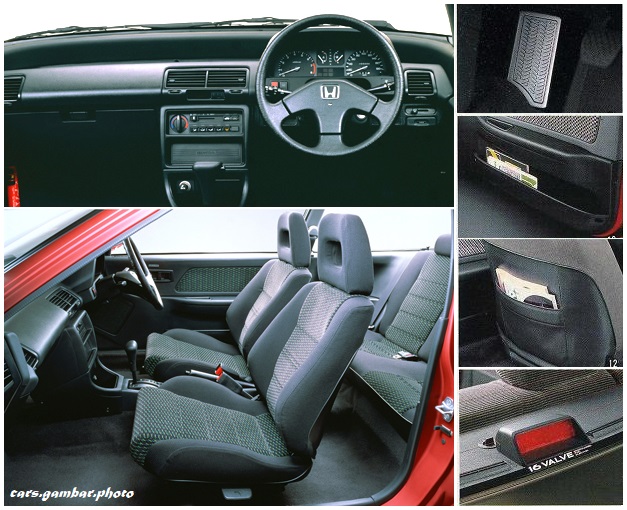 |
| Honda Civic 4th Gen Interior Photos. |
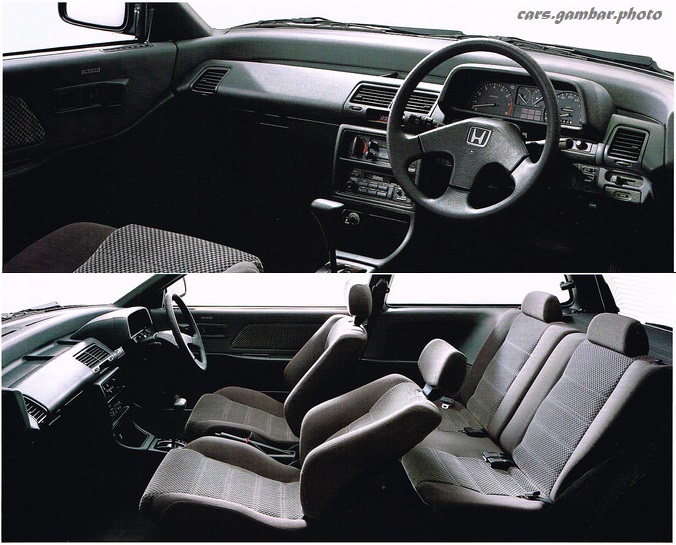 |
| Honda Civic Nouva SB3 Interior picture. |
Minor change on September 21, 1989. The body rigidity is somewhat improved. A few face lift is also performed mainly around the hood / tail lamp, and the interior was changed mainly around the design around the meter of the dashboard. In the AT car, the meter has a shift position indicator.
Only when selecting the combination with the optional 4wA.LB (anti-lock brake system) with four-wheel drive, the drive system progressed from real time 4WD just connecting front and back with viscous coupling rather than “INTRAC” It changed to the system. When 4WA.L.B is not selected by four wheel drive, it becomes real time 4WD regardless of the type of the transmission.
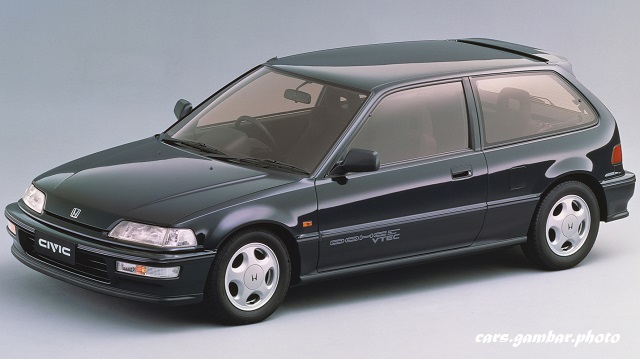 |
| Photo of 1990-1991 Honda Civic SiR Black with B16A DOHC VTEC engine. The last model of 4th gen Civic. |
In late 1989 the new top model of the 3-door hatchback was the new SiR, fitted with the 1.6-litre, 160 PS (118 kW; 158 hp) at 7,600 rpm “B16A” DOHC VTEC engine which was installed in the Integra (DA type). This, the first B engine, marked the introduction of Honda’s variable valve timing and electronic lift control technology, or VTEC. By providing two different camshaft profiles—one for fuel economy, one for performance—the VTEC engines set a high-revving, naturally aspirated precedent for future performance variants of the Honda Civic. The grade name equipped with this engine boasting 160PS, the best 1.6L class at the time, was “SiR”. The shape of the front bumper and headlight was changed and the power bulge of the “Si” bonnet was deleted because the relationship between the middle part of the bonnet and the fender parts was made convex from the conventional concave. Rear bumper, rear panel and rear combination lamp also changed slightly.
Also the shape of the front bumper, bonnet and fender was changed for the 4 doors, the sense of volume increased. The headlight became four pieces of detail. The rear panel and the rear combination lamp also changed slightly. “Si” (front wheel drive) and “RT – Si” (four wheel drive) of the ZC type engine were additionally set.
Regarding the North American specification, it remained similar to the initial type, so the difference in appearance with the Japanese specification such as bumper, hood, etc. became large.
In the late stage sedan, he was active as a police car for police.
In addition, the EF-type Civic has a long production time, the 5-door shuttle / pro is continued to be produced after the model change to the EG type (1991), and further the 3-door / 4-door model to the EK type In the spring of the following year that changed (1995), it was lineup as a regular catalog model until Ortier / partner was released. In addition, based on the 4-door sedan, joint development with the Austin-Rover Group (ARG) (present MG Rover) that was then partnered with the deal, strengthening the body and reinforcing the sound absorbing material, upgrading various equipments and re- Designing, advanced model “Concerto” was born. This model was also offered to England Rover and was produced as Rover 400 series.